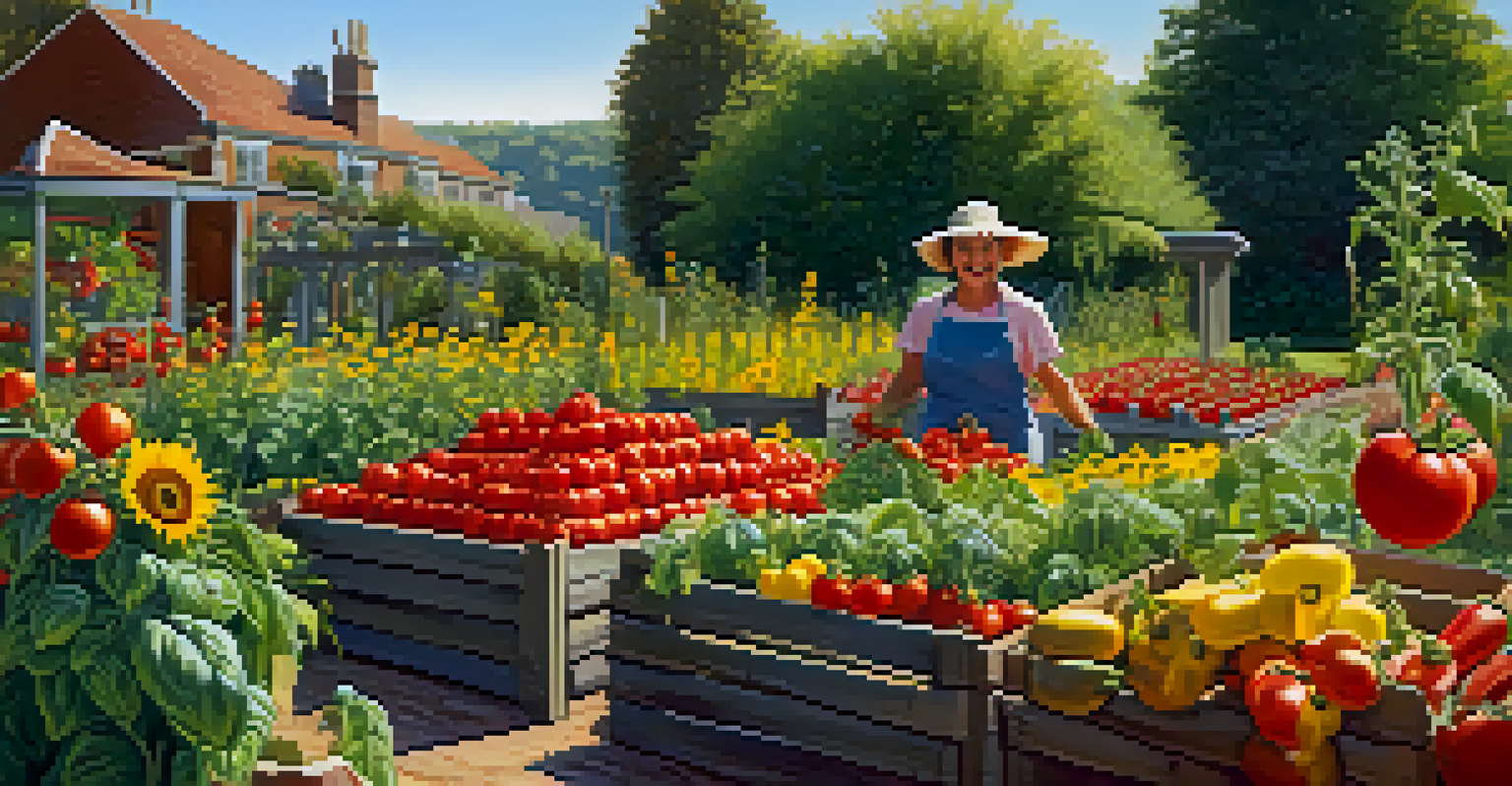Seasonal Planting: Aesthetic Changes Throughout the Year

Understanding Seasonal Planting and Its Benefits
Seasonal planting refers to the practice of selecting plants that thrive in specific seasons. This method not only maximizes growth but also enhances the aesthetic appeal of your garden throughout the year. By aligning your planting with the seasons, you can create a dynamic landscape that changes with the weather.
To plant a garden is to believe in tomorrow.
One of the key benefits of seasonal planting is its ability to promote biodiversity. Different plants attract a variety of pollinators, which can improve the health of your garden ecosystem. Plus, a diverse garden can be more resilient to pests and diseases, making it easier to maintain.
Additionally, seasonal planting can save you time and resources. Choosing plants that naturally thrive during their designated seasons often means less watering, fewer pests, and reduced need for fertilizers. This sustainable approach not only benefits the environment but also makes gardening more enjoyable.
Spring: A Burst of Color and Life
As winter fades away, spring brings a vibrant revival to your garden. This season is the perfect time to plant colorful flowers like tulips and daffodils, which emerge from the ground, filling your space with bright hues. The sight of blooming plants can uplift your mood and signal the arrival of warmer days.

Spring also offers the opportunity to plant vegetables such as peas and lettuce. These crops thrive in the cooler temperatures of early spring, making them ideal for early gardening. Plus, nothing beats the satisfaction of harvesting fresh produce from your own backyard.
Seasonal Planting Maximizes Growth
Aligning your gardening efforts with the seasons not only promotes plant health but also enhances the garden's visual appeal year-round.
Moreover, spring is a great time to assess your garden's layout. Consider adding new elements like raised beds or borders to enhance the visual appeal. This season is not just about planting; it's about planning and creating a space that feels alive and inviting.
Summer: Embracing Full Bloom and Abundance
Summer is synonymous with lush greenery and full blooms. It's the season where your garden truly comes alive, showcasing a dazzling array of colors and fragrances. Plants like sunflowers and zinnias thrive in the summer sun, providing a cheerful atmosphere.
Gardening is the purest of human pleasures.
This is also the prime time for harvesting many fruits and vegetables. Bountiful crops like tomatoes and peppers not only add flavor to your meals but also contribute to the visual richness of your garden. A vibrant vegetable patch can be both productive and beautiful.
To maintain your garden's beauty in summer, regular maintenance is key. Ensure adequate watering, deadheading spent blooms, and weeding to keep your plants healthy and thriving. A little effort goes a long way in preserving the summer splendor of your outdoor space.
Fall: A Canvas of Warm Tones and Transition
As summer transitions to fall, your garden undergoes a stunning transformation. The vibrant greens start to shift into warm hues of orange, red, and yellow, creating a picturesque landscape. Plants like asters and chrysanthemums bloom beautifully, providing a final burst of color before winter.
Fall is also a great time to plant perennials that will establish roots before the colder months. This ensures a lively garden come spring, as these plants will be ready to bloom earlier. It's an investment in future beauty that pays off when the seasons change.
Biodiversity Boosts Garden Resilience
Planting a variety of species attracts different pollinators, improving the overall health and sustainability of the garden ecosystem.
Additionally, this season invites you to reflect on your gardening efforts. Take time to enjoy the beauty around you, and consider what worked well and what didn’t. This reflective practice can enhance your gardening strategy for the following year.
Winter: Beauty in Dormancy and Planning
While winter may seem like a quiet time in the garden, there's beauty in its stillness. The bare branches and evergreen shrubs create a serene landscape that can be quite captivating. Features like snow-covered plants or frosted leaves add a unique aesthetic.
Winter is also the perfect time for planning your spring garden. You can browse seed catalogs, sketch your layouts, and dream about the vibrant blooms to come. This period of dormancy allows for reflection and preparation, setting the stage for a successful gardening season.
Additionally, consider incorporating winter interest plants such as holly or ornamental grasses. These can provide visual appeal even in the cold months, ensuring your garden remains inviting year-round. An intentional winter garden can be just as stunning as those in more active seasons.
Sustainable Practices for Seasonal Planting
Sustainable gardening practices play a crucial role in seasonal planting. By choosing native plants that are adapted to your local climate, you can create a thriving garden that requires less water and maintenance. Native plants also provide essential habitats for local wildlife.
Incorporating composting into your gardening routine can further enhance sustainability. Compost enriches the soil, reduces waste, and improves plant health, leading to a more resilient garden. It’s a simple practice that can yield significant benefits over time.
Sustainable Practices Enhance Gardening
Incorporating sustainable methods like composting and using native plants leads to a thriving garden that requires less maintenance.
Moreover, consider using organic methods for pest control and fertilization. This approach not only protects your plants but also contributes to a healthier environment. By being mindful of your gardening practices, you can create a beautiful garden that is also eco-friendly.
Tips for Planning Your Seasonal Planting Schedule
Successfully navigating seasonal planting involves careful planning. Start by researching your local climate and hardiness zone, which will guide your plant selection. Understanding when to plant different varieties will help ensure they thrive when the time is right.
Creating a planting calendar can be a helpful tool. Mark the dates for sowing seeds, transplanting, and harvesting. This organized approach not only keeps you on track but also allows you to enjoy each phase of your garden's growth.

Lastly, don't hesitate to experiment! Gardening is as much about personal expression as it is about practicality. Trying new plants or layouts can lead to delightful surprises, making your gardening journey exciting and fulfilling.
Embracing the Seasons: A Journey in Gardening
Embracing seasonal planting is more than just horticulture; it's about experiencing the rhythm of nature. Each season brings its unique beauty and challenges, allowing gardeners to connect deeply with their environment. This journey invites you to witness the transformations that occur throughout the year.
Seasonal planting teaches patience and adaptability. As you plan and nurture your garden, you learn to appreciate the nuances of growth and change. This experience can be incredibly rewarding as you watch your efforts bloom over time.
Ultimately, by aligning your gardening practices with the seasons, you cultivate not just a garden, but a deeper appreciation for the natural world. Each season offers new lessons, beauty, and excitement, making it a truly enriching experience.